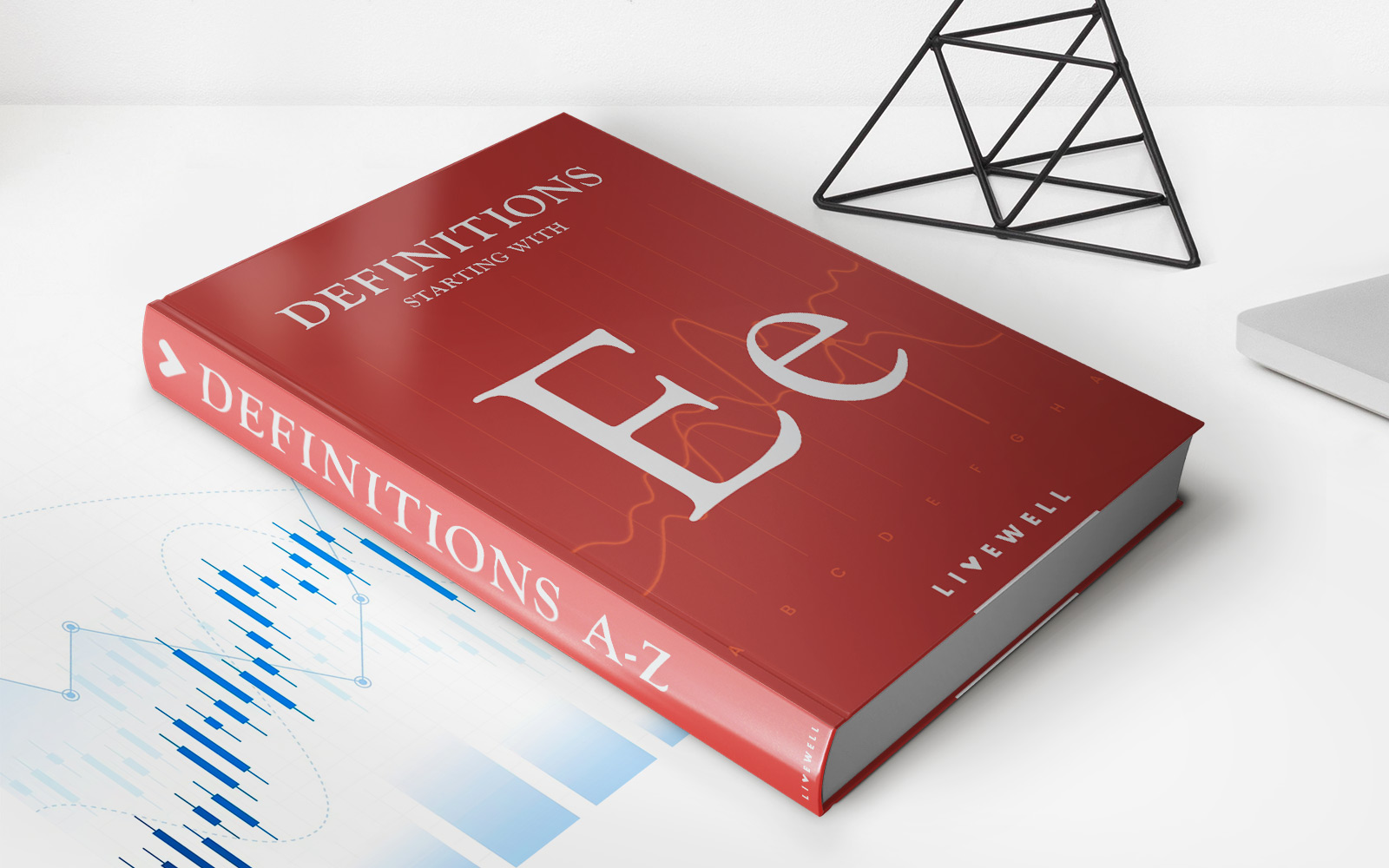Home>Finance>What Is The Grace Period After You Cancel Your Insurance With Progressive?


Finance
What Is The Grace Period After You Cancel Your Insurance With Progressive?
Modified: February 21, 2024
Learn about the grace period after canceling your Progressive insurance. Understand the financial implications and how it affects your finances.
(Many of the links in this article redirect to a specific reviewed product. Your purchase of these products through affiliate links helps to generate commission for LiveWell, at no extra cost. Learn more)
Table of Contents
Introduction
Understanding the Importance of the Grace Period After Canceling Your Insurance with Progressive
Canceling an insurance policy is a decision that individuals may need to make for various reasons, such as switching to a new provider, selling a vehicle, or experiencing changes in financial circumstances. When it comes to canceling your insurance with Progressive, understanding the grace period after cancellation is crucial. The grace period is a defined duration after the policy cancellation during which the coverage remains in effect, providing a safety net for the policyholder. This period is designed to allow policyholders to make necessary arrangements for securing new coverage or to reinstate their policy without experiencing a lapse in coverage.
It's essential for policyholders to comprehend the implications of canceling their insurance with Progressive, including the terms of the grace period, the potential impact on coverage and premiums, and the process of reinstating a policy if needed. By gaining a comprehensive understanding of the grace period and its significance, individuals can make informed decisions regarding their insurance needs and ensure a smooth transition without leaving themselves vulnerable to unforeseen risks. In this article, we will delve into the details of the grace period after canceling your insurance with Progressive, providing valuable insights into this critical aspect of insurance management.
Understanding the Grace Period
When it comes to insurance policies, the grace period holds significant importance as it provides a buffer of time for policyholders after the cancellation of their insurance. The grace period is essentially an extension of coverage that follows the formal cancellation of the policy. This period offers a safeguard, ensuring that individuals remain protected against unforeseen circumstances during the transition phase.
Progressive, like many other insurance providers, typically offers a grace period after the cancellation of a policy. During this period, the policyholder retains coverage as if the policy were still active, despite the formal cancellation. This means that if an incident occurs during the grace period, the policyholder may still be eligible for coverage, subject to the terms and conditions outlined in the original policy.
It’s important to note that the duration of the grace period can vary based on the specific terms of the policy and the regulations in the state where the policy is issued. Typically, grace periods last between 10 to 30 days, allowing policyholders a reasonable window to secure alternative coverage or make arrangements to reinstate their policy if desired.
During the grace period, policyholders should be aware that the coverage remains in effect, but any missed premium payments or outstanding balances may still impact the policy. Understanding the terms and conditions of the grace period is crucial to ensure that individuals can make informed decisions regarding their insurance needs and avoid any potential gaps in coverage.
Canceling Your Insurance with Progressive
Canceling an insurance policy with Progressive involves a series of steps that policyholders should be familiar with to ensure a smooth and well-managed transition. The process typically begins with the policyholder expressing their intent to cancel the policy, either due to a change in circumstances, a switch to a different provider, or the sale of a vehicle. It’s essential to initiate this process in a timely manner to avoid unnecessary premium payments and to adhere to any notice requirements specified in the policy.
Policyholders can cancel their insurance with Progressive by contacting their agent or the customer service department. It’s advisable to have the policy number and relevant personal information on hand when making the cancellation request to facilitate the process. Additionally, individuals should be prepared to provide the effective date for the cancellation, which determines the end of the policy term and the commencement of the grace period.
Upon canceling the policy, it’s important to confirm the details of the grace period with Progressive to understand the duration of the extended coverage and any associated terms. Policyholders should also inquire about any potential refunds for prepaid premiums, taking into account any applicable administrative fees or charges.
It’s worth noting that canceling an insurance policy may have implications for individuals who are financing or leasing a vehicle, as continuous insurance coverage is often a requirement in these scenarios. Therefore, it’s advisable to have alternative coverage in place before canceling the Progressive policy to avoid any lapses in insurance that could violate contractual obligations.
By familiarizing themselves with the process of canceling insurance with Progressive, policyholders can navigate this transition effectively, ensuring that they are well-informed and prepared for the next steps, including the grace period and potential reinstatement of the policy if needed.
The Grace Period After Canceling
After canceling an insurance policy with Progressive, the grace period comes into effect, providing a crucial window of extended coverage for the policyholder. During this period, which typically ranges from 10 to 30 days, depending on the specific terms of the policy and state regulations, the policyholder retains the benefits of coverage as if the policy were still active.
It’s important to understand that the grace period is designed to offer a safety net, allowing policyholders to make necessary arrangements for securing alternative coverage or reinstating their policy without experiencing a lapse in protection. This period can be particularly valuable in situations where policyholders are in the process of transitioning to a new insurance provider or are temporarily without coverage due to unforeseen circumstances.
While the coverage remains in effect during the grace period, policyholders should be mindful of any outstanding premium payments or balances, as these may impact the policy and its potential reinstatement. Additionally, any claims made during the grace period will be subject to the terms and conditions outlined in the original policy, underscoring the importance of understanding the scope of coverage during this transitional phase.
Policyholders should also take into account any specific requirements or guidelines provided by Progressive regarding the grace period, including the procedures for reinstating a policy if they opt to do so. Being well-informed about the grace period and its implications empowers individuals to navigate this phase confidently and make informed decisions regarding their insurance needs.
By leveraging the grace period effectively, policyholders can mitigate the risk of being uninsured during the transition period, ensuring that they have the necessary time and flexibility to secure alternative coverage or reinstate their policy without compromising their protection against potential risks.
Reinstating Your Policy
Reinstating an insurance policy with Progressive after the initial cancellation or during the grace period involves specific procedures that policyholders should be aware of to effectively restore their coverage. If a policyholder decides to reinstate their policy within the grace period, it’s essential to contact Progressive promptly to initiate the reinstatement process.
When reinstating a policy, individuals may need to address any outstanding premium payments or balances to bring the policy up to date. Progressive may also require policyholders to provide updated information, such as changes in the insured vehicles or drivers, to ensure that the policy reflects the current circumstances accurately.
It’s important to note that the ability to reinstate a policy within the grace period is contingent on the specific terms and conditions outlined in the original policy and any guidelines provided by Progressive. Therefore, policyholders should familiarize themselves with the reinstatement process and any associated requirements to facilitate a seamless transition back to full coverage.
Upon reinstating the policy, policyholders should verify the effective date of the reinstated coverage and any adjustments to the policy terms or premiums. Additionally, individuals should inquire about any potential refunds or adjustments for prepaid premiums that may have been affected by the initial cancellation and subsequent reinstatement.
Reinstating a policy within the grace period can provide a practical solution for individuals who may have encountered changes in their circumstances or insurance needs, allowing them to maintain continuous coverage without experiencing a lapse in protection. By understanding the reinstatement process and adhering to the necessary steps, policyholders can effectively navigate this transition and ensure that their insurance coverage aligns with their evolving requirements.
Impact on Coverage and Premiums
The decision to cancel an insurance policy with Progressive and the subsequent grace period can have implications for both coverage and premiums. Understanding these potential impacts is essential for policyholders to make informed decisions and manage their insurance needs effectively.
During the grace period, the coverage remains in effect, providing a buffer against unforeseen risks. However, it’s important to note that any claims made during this period will be subject to the terms and conditions outlined in the original policy. Therefore, policyholders should be mindful of the scope of coverage during the grace period and any limitations that may apply.
Additionally, the decision to reinstate a policy within the grace period can influence the continuity of coverage and the associated premiums. Reinstating the policy allows policyholders to maintain uninterrupted coverage, potentially avoiding gaps in protection that could result from a lapsed policy. However, the reinstatement process may involve addressing any outstanding premium payments or balances, and the policy’s terms and premiums may be subject to adjustments based on the reinstatement.
Policyholders should also consider the potential impact on their premiums when canceling and reinstating a policy. Depending on the circumstances surrounding the cancellation and the duration of the grace period, there may be adjustments to the premiums when the policy is reinstated. These adjustments could be influenced by factors such as changes in the insured vehicles or drivers, as well as any outstanding balances or missed payments that need to be addressed during the reinstatement process.
Understanding the interplay between the grace period, coverage, and premiums empowers policyholders to navigate these transitions effectively, ensuring that they maintain the appropriate level of protection while managing the financial aspects of their insurance policy. By staying informed about the potential impacts on coverage and premiums, individuals can make well-informed decisions that align with their insurance needs and financial considerations.
Conclusion
Understanding the grace period after canceling your insurance with Progressive is pivotal in managing your insurance transitions effectively. The grace period serves as a safeguard, providing an extended window of coverage after the formal cancellation of the policy. This period allows policyholders to make necessary arrangements for securing alternative coverage or reinstating their policy without experiencing a lapse in protection.
By comprehending the implications of the grace period, including its duration, impact on coverage and premiums, and the process of reinstating a policy if needed, individuals can navigate insurance cancellations with confidence and clarity. It’s essential to be aware of the specific terms and guidelines provided by Progressive regarding the grace period, ensuring that policyholders can leverage this period effectively to safeguard their insurance needs during transitional phases.
Policyholders should also consider the potential impacts on coverage and premiums when canceling and reinstating a policy. Being mindful of the scope of coverage during the grace period and understanding the implications for premiums empowers individuals to make well-informed decisions that align with their insurance needs and financial considerations.
Ultimately, the grace period following the cancellation of your insurance with Progressive offers a valuable opportunity to manage transitions, address changes in circumstances, and maintain continuous coverage. By staying informed and proactive, policyholders can effectively navigate these processes, ensuring that their insurance needs are met while mitigating the risk of gaps in protection.
In conclusion, the grace period is a vital component of the insurance management process, providing policyholders with the flexibility and security needed to navigate transitions and changes in their insurance coverage effectively. By understanding and leveraging the grace period, individuals can ensure a seamless and well-managed transition when canceling or reinstating their insurance with Progressive.














